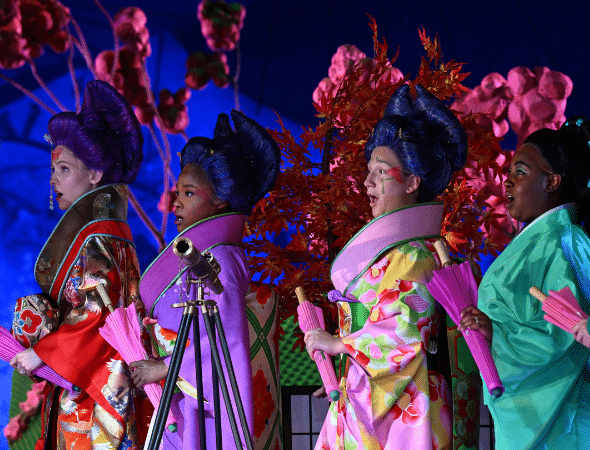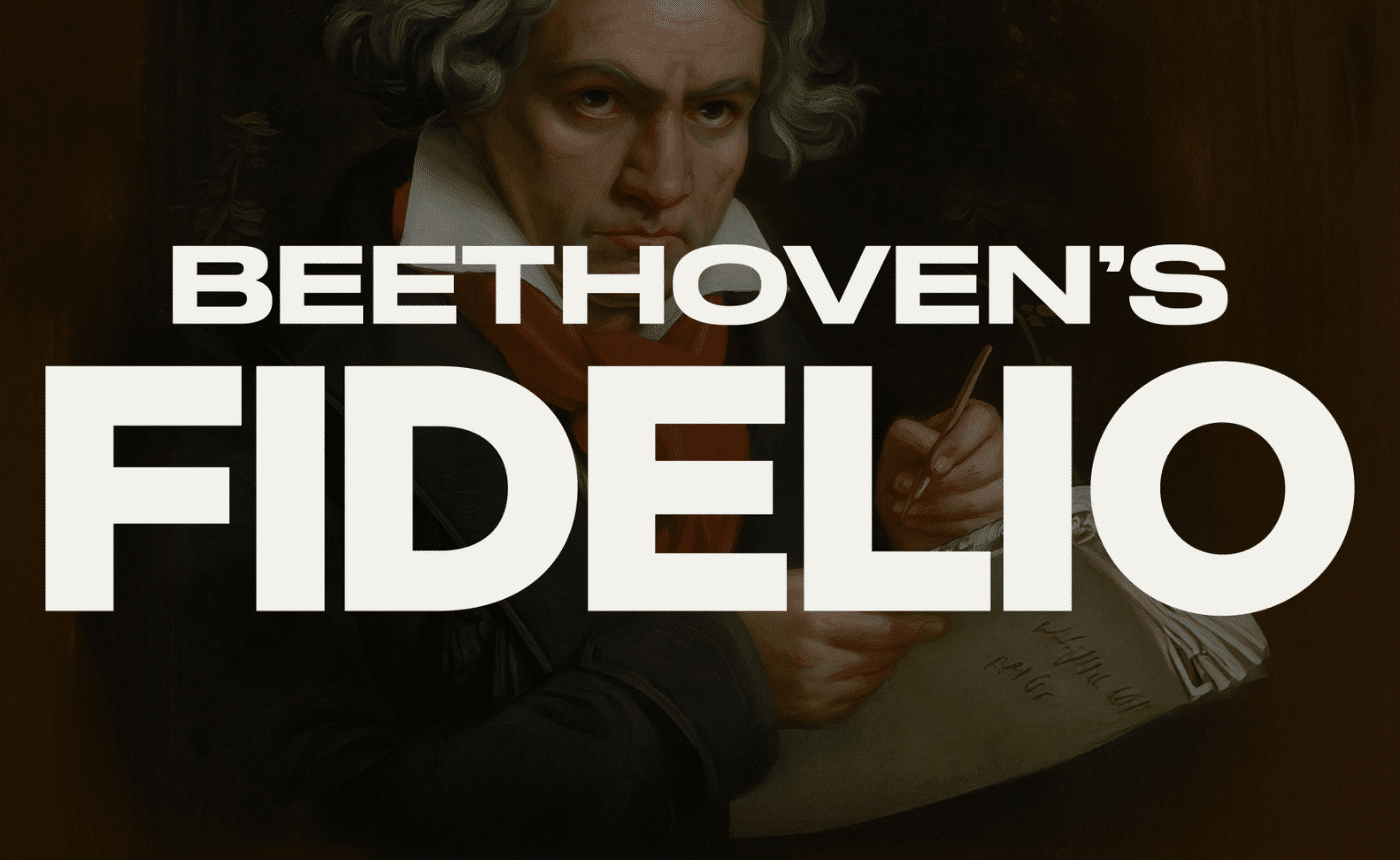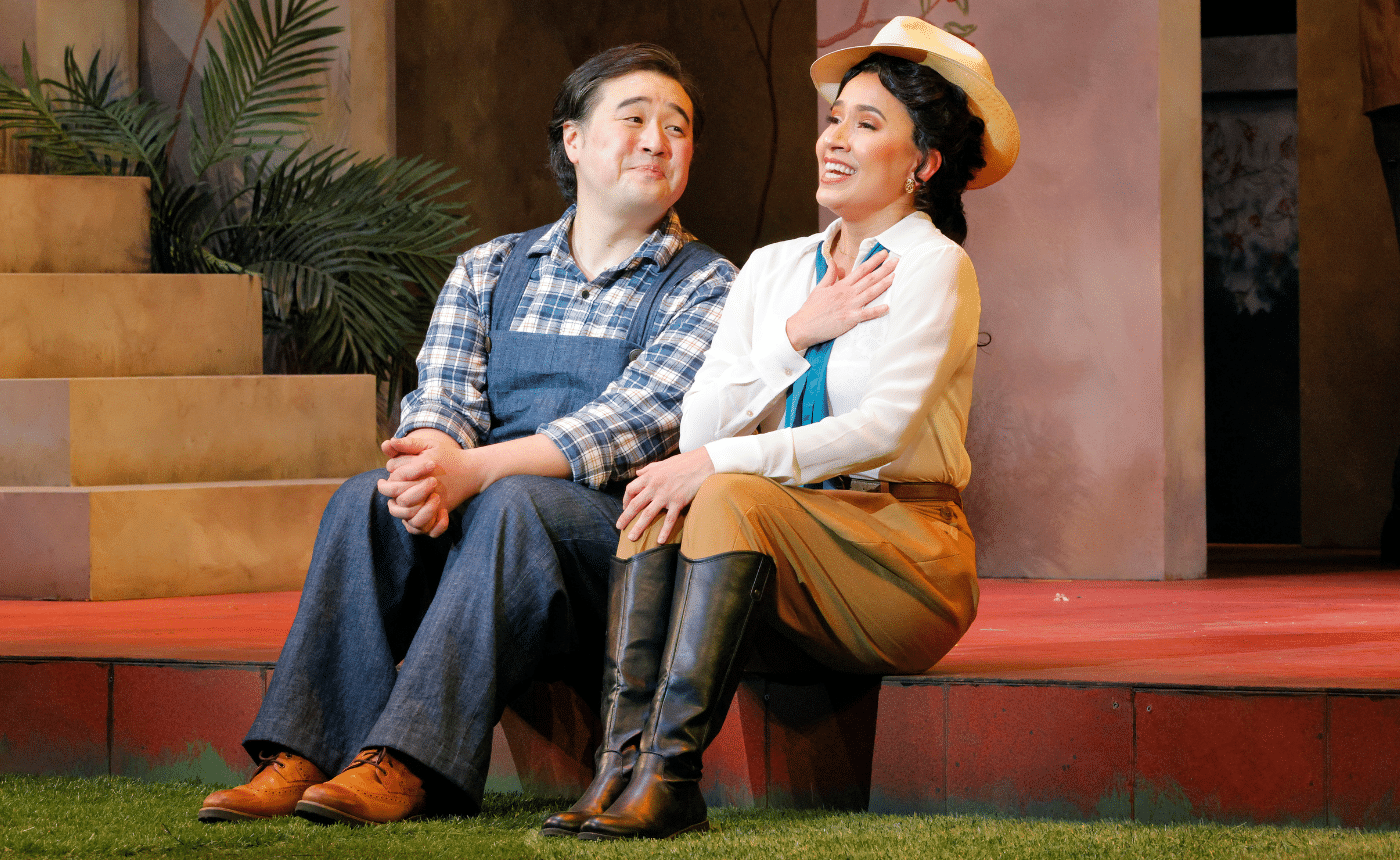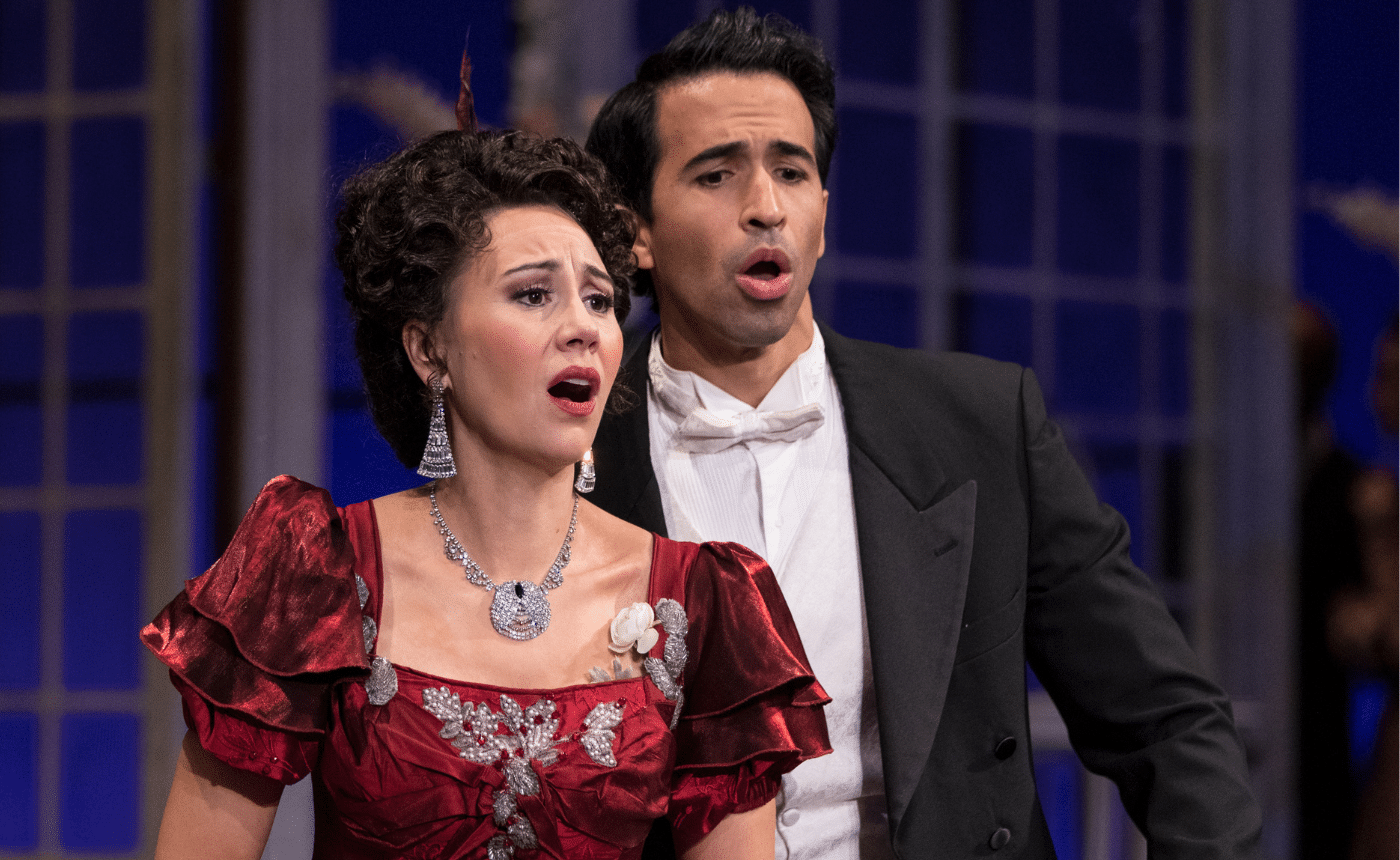Tradition Meets Transformation
by Megs Vincent
The delicate strains of Puccini’s Madame Butterfly are poised to captivate Utah audiences once again, but this time with a bold new vision that honors its timeless beauty while inviting a contemporary conversation. Revered for its heartbreaking melodies and emotional depth, Madame Butterfly is as iconic as it is controversial. Now, under the innovative direction of Matthew Ozawa, the opera returns to the stage with a production that confronts its complex history and offers fresh insight into a story audiences have cherished for over a century.
As we conclude our final preparations to bring this reimagined work to you May 3-11, we are pleased to share with you this production’s journey, and invite you to contemplate with us the opera’s inherent duality of beauty and darkness, and the role the arts play in highlighting our humanity.
Historical Context
Since its debut in 1904, Madame Butterfly has enchanted audiences with its sweeping romance and poignant tragedy. At its heart, the opera tells the story of Cio-Cio-San, a young Japanese woman who falls in love with American naval officer Pinkerton, only to suffer betrayal and heartbreak. The music, rich with unforgettable arias such as “Un bel dì vedremo,” has cemented its place as one of the greatest operatic masterpieces of all time.

Photo courtesy of Cincinnati Opera
However, alongside its beauty lies a darker legacy. The opera has long been critiqued for its fetishization of Asian women, cultural appropriation, and perpetuation of harmful stereotypes. Early productions often featured white singers in yellowface, further compounding its problematic elements. Yet, these issues provide an opportunity for reflection and reinterpretation rather than dismissal. By examining Madame Butterfly through a critical lens, modern productions can preserve its artistry while addressing the need for greater cultural sensitivity and awareness.
Matthew Ozawa’s Vision
Enter Matthew Ozawa, a visionary director whose Japanese and Japanese American heritage uniquely positions him to tackle the challenges of this opera. With a team of similarly diverse creatives, Ozawa approaches Madame Butterfly not by shying away from its complexities, but by leaning into them. By highlighting the opera’s problematic elements, he underscores Pinkerton’s cultural arrogance and moral failings, casting his actions in a harsher, more intentional light.
A groundbreaking element of Ozawa’s production is its use of virtual reality (VR) as a framing device. This innovative approach positions the story as a fantasy filtered through Pinkerton’s gaze, drawing attention to his distorted perceptions of love, culture, and power. By contextualizing the narrative in this way, the production invites audiences to see the opera not just as a romantic tragedy but as a cautionary tale about cultural imperialism and exploitation. Ozawa’s vision transforms Madame Butterfly into a contemporary work of art that resonates deeply with today’s audiences.
Utah Opera’s Role
Utah Opera is proud to serve as a co-producer of this groundbreaking production, which has already garnered acclaim in Cincinnati, Detroit, and Pittsburgh. By collaborating with other leading companies, Utah Opera continues to demonstrate its commitment to fostering innovative and thought-provoking performances.
In discussing the upcoming production of Madame Butterfly, Utah Opera’s Artistic Director, Christopher McBeth, emphasized the importance of acknowledging the opera’s complex cultural context. “With Madame Butterfly, as much as we love the music, the characters, and the story, we must also recognize the European and American perspectives of the time, which lacked a deep understanding of Japanese culture.”
“Utah Opera is exploring with members of our local Japanese American community how this production of Madame Butterfly may further appreciation and respect for Japanese heritage in Utah,” said McBeth, highlighting the significance of engaging with the local Japanese American community in Utah.
Bringing this production to Utah audiences is both an honor and a responsibility. Utah Opera has approached the staging with care and respect, ensuring that the performance maintains the highest artistic standards while addressing the cultural sensitivities of its subject matter. The company’s dedication to these values is a testament to its role as a leader in the arts community.
A Balance of Tradition and Modernity
For traditionalists, rest assured—Puccini’s music remains as breathtaking as ever, and Pinkerton has always been the story’s true villain. In fact, this production restores original moments that were cut from early performances, offering audiences an even richer experience of the opera.
At the same time, Ozawa’s reimagining breathes new life into the work, allowing viewers to see it through a vibrant and thoughtful lens. This balance of tradition and modernity ensures that Madame Butterfly remains both a cherished classic and a relevant, evolving masterpiece. It’s an opportunity to appreciate the opera’s beauty while engaging with the important conversations it sparks.
Don’t miss your chance to experience this reimagined masterpiece. Support the arts and witness firsthand how Madame Butterfly has been transformed for a new generation. We look forward to seeing you in May!





